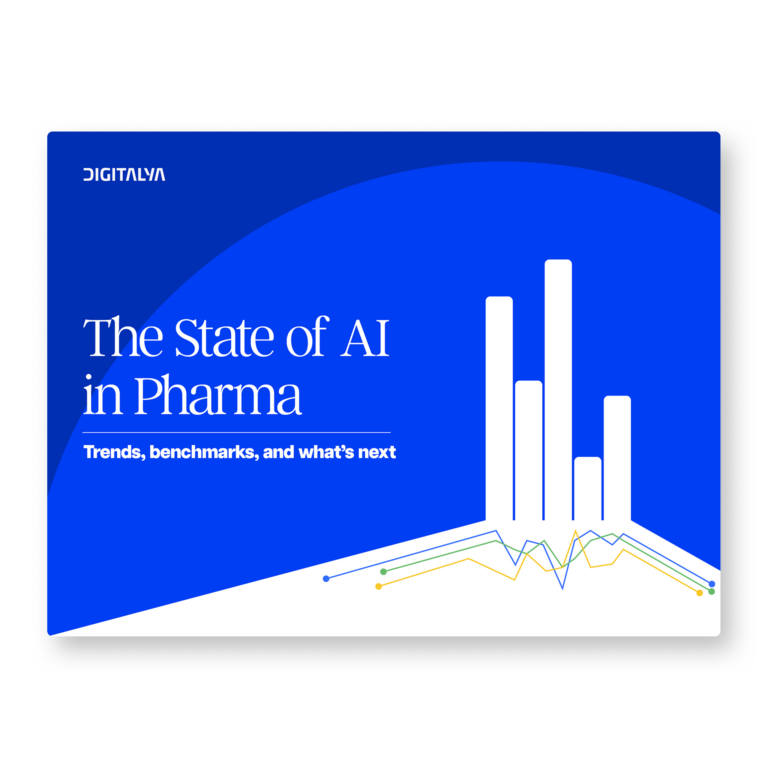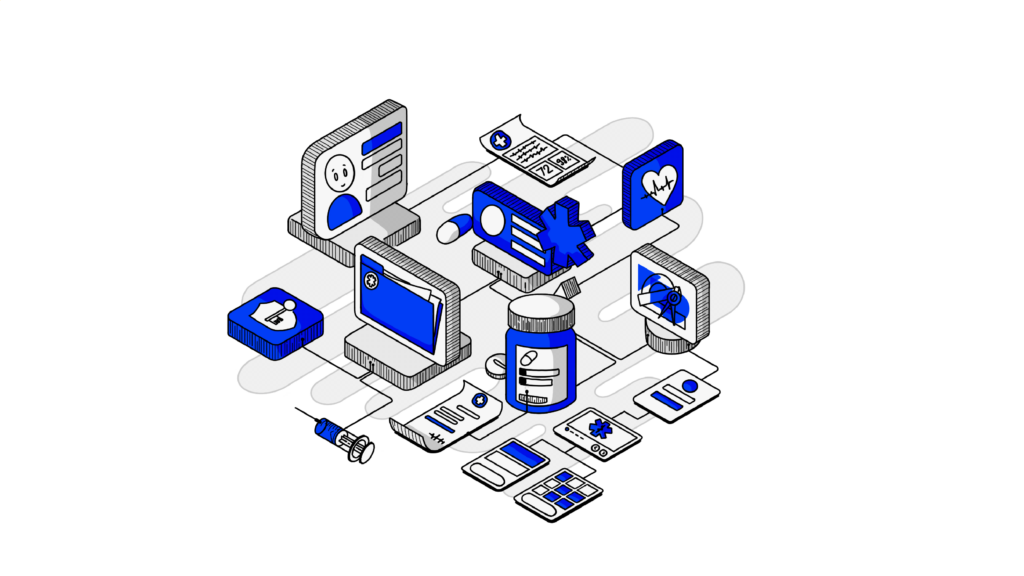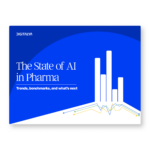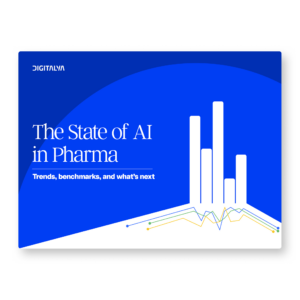1. Introduction
With an increasing emphasis on patient-centric care and the complexities of modern healthcare, understanding and responding to customer needs has never been more critical.
By harnessing artificial intelligence, pharmaceutical companies can gain unprecedented insights into customer behaviors, preferences, and journeys.
1.1 Why brand loyalty is important in the pharma industry
Brand loyalty in the pharma industry is a cornerstone of long-term success. It extends beyond mere preference; it signifies trust, reliability, and efficacy. For patients, a loyal relationship with a pharma brand often equates to adherence to treatment plans, improved health outcomes, and reduced anxiety.
1.1.1 Key factors influencing customer loyalty in the pharma sector
Building and maintaining loyalty in the pharma industry is a complex endeavor influenced by many factors. Understanding these key drivers is crucial for developing effective strategies to foster long-term customer relationships.
- Product efficacy and safety — patients expect consistent, reliable, and effective treatments.
- Trust and reputation—trust is paramount, and a strong reputation for ethical practices, transparency, and patient well-being is essential for building loyalty.
- Accessibility and affordability— ensuring that patients can access and afford prescribed medications is crucial. Insurance coverage, pricing strategies, and distribution channels play a significant role.
- Healthcare provider relationships — strong partnerships with healthcare providers are essential for driving patient loyalty. Collaboration, education, and support can positively impact patient outcomes and brand perception.
- Customer service — timely, informative, and compassionate support can build trust and satisfaction.
1.1.2 Key benefits of brand loyalty for pharma companies
What does brand loyalty mean for pharma companies?
- Market share protection — loyal patients are less likely to switch to generic alternatives or competitor products, even after patent expiration.
- Increased revenue — fidelity translates to price insensitiveness and a willingness to pay more for trusted brands.
- Reduced marketing costs — acquiring new customers is significantly more expensive than retaining existing ones.
- Stronger brand reputation — loyal customers act as brand ambassadors, spreading positive word-of-mouth.
- Data-driven insights — loyal patients provide valuable data for product development, marketing, and customer experience enhancement.
1.2 The intersection of AI and pharma brand loyalty
Integrating artificial intelligence into the pharmaceutical industry has opened new avenues for enhancing brand loyalty. AI technologies enable deeper insights into customer behavior, preferences, and needs, facilitating more personalized and effective marketing strategies.
- Data-driven decision-making — AI enables businesses to collect and analyze vast amounts of patient data, including prescription data, social media interactions, and clinical trial results. This data can be leveraged to identify trends, patterns, and opportunities to improve products, services, and marketing strategies.
- Personalized patient experiences — AI can be used to create highly personalized patient experiences by tailoring messages, offers, and support based on individual preferences and health conditions. This level of customization can significantly enhance patient satisfaction and loyalty.
- Predictive analytics — by analyzing historical data and identifying patterns, AI can help predict patient behavior, such as medication adherence or the likelihood of switching brands. This information can be used to address potential issues and strengthen customer relationships proactively.
- Enhanced customer engagement — AI-powered chatbots and virtual assistants can provide patients with instant support, answer questions, and resolve issues. This improves accessibility and enhances the overall patient experience.
- Optimized marketing campaigns — AI can help optimize marketing campaigns by identifying target audiences, delivering personalized messages, and measuring campaign effectiveness. This leads to increased ROI and improved brand perception.
By leveraging AI, pharma companies can better understand their customers, build stronger relationships, and ultimately drive brand loyalty.
2. AI-driven customer insights — an overview
AI is transforming the way businesses understand and engage with customers. In the pharma industry, AI driven customer insights are particularly valuable due to the complexity of patient journeys and the critical nature of treatment decisions.
2.1 What are AI-driven customer insights?
AI-driven customer insights are data-derived understandings obtained through the use of AI technologies. These insights are generated by analyzing vast amounts of customer data from various sources, such as purchasing behaviors, social media interactions, health records, and feedback.
AI techniques, including machine learning, natural language processing, and predictive analytics, are employed to uncover patterns, preferences, and trends that are not immediately apparent through traditional data analysis methods.
2.2 Benefits of using AI for customer data analysis
What can pharma companies do with the power of AI?
- Uncover hidden patterns — AI can analyze vast datasets to identify subtle patterns in patient behavior, preferences, and needs that would be difficult to spot using traditional methods.
- Predict customer behavior — by studying historical data, AI algorithms can predict future customer actions, enabling companies to anticipate needs and proactively address potential issues.
- Enhance customer segmentation—AI can create highly granular customer segments based on various factors, allowing for more targeted marketing and personalized experiences.
- Optimize marketing campaigns—AI can analyze marketing campaigns’ performance in real-time, enabling companies to adjust strategies for maximum impact.
- Improve customer experience — by understanding customer needs and preferences at a deeper level, AI can help pharma companies create more seamless and satisfying customer experiences.
In an industry where trust and reliability are paramount, AI-driven insights provide a competitive advantage, enabling companies to meet their customers’ evolving needs and stay ahead of the market.
3. Understanding the customer journey
The customer journey in the pharmaceutical industry is a complex process that involves multiple stages and touchpoints. It encompasses the entire customer experience with a pharmaceutical brand, from initial awareness to post-purchase support and beyond.
3.1 Leveraging AI to map the customer journey
What are the key stages of the pharma customer journey?
- Disease awareness — this stage involves patients recognizing symptoms, seeking information, and potentially consulting with healthcare providers.
- Diagnosis and treatment decision — patients are diagnosed with a specific condition, and healthcare providers evaluate treatment options.
- Prescription and dispense — the prescribed medication is dispensed to the patient.
- Treatment adherence — patients follow the prescribed treatment regimen.
- Treatment outcomes — the effectiveness of the treatment is evaluated.
- Post-treatment — this stage involves follow-up care, potential adverse effects, and the decision to continue or switch treatments.
How can AI enhance the understanding of the customer journey?
- Identifying touchpoints — AI can analyze vast amounts of data from various sources to pinpoint critical touchpoints where interactions with patients and healthcare providers occur.
- Analyzing customer behavior — artificial intelligence can track customer behavior across different channels (e.g., websites, social media, mobile apps) to understand their preferences and needs.
- Identifying pain points — AI can identify challenges and frustrations experienced at different journey stages by analyzing customer feedback and behavior.
- Predicting customer needs — using historical data, AI can predict future customer needs and preferences, allowing for proactive engagement.
3.2 Identifying pain points and opportunities
A deep understanding of the customer journey is essential, but it’s equally important to pinpoint specific areas where customers encounter challenges or where there’s potential for improvement. AI can be a powerful tool for this.
| Identifying pain points | Uncovering opportunities |
| Adherence challenges — by analyzing patient data, AI can identify patterns of non-adherence, such as missed doses or early medication discontinuation. | Personalized support — AI can identify opportunities to provide tailored support based on individual patient needs and preferences. |
| Access issues — AI can help pinpoint barriers to accessing medication, including insurance coverage issues, prescription delays, or lack of available pharmacies. | New product development — by analyzing patient feedback and unmet needs, AI can help identify gaps in the market and inform new product development efforts. |
| Side effect management — AI can identify patients experiencing specific side effects and correlate them with potential causes or risk factors. | Enhanced patient engagement — AI can identify opportunities to increase patient engagement through educational materials, support programs, or digital tools. |
| Communication gaps — by analyzing patient interactions with healthcare providers and pharma companies, AI can identify breakdowns in communication that lead to dissatisfaction. | Improved healthcare provider relationships — by understanding the challenges healthcare providers face, AI can help identify opportunities for collaboration and support. |
By effectively identifying pain points and opportunities, pharma companies can take targeted actions to improve the customer experience and build stronger relationships.
3.3 Personalizing the patient experience
AI offers unprecedented opportunities to create highly personalized experiences for patients, fostering stronger connections and driving loyalty.
One key area is tailored communication, where artificial intelligence can analyze patient data to deliver personalized messages, educational materials, and treatment reminders.
There is also customized support, with AI-powered chatbots and predictive interventions, where AI can proactively offer support or interventions, like medication refills or appointment reminders.
Additionally, in collaboration with healthcare providers, AI can help identify optimal, personalized treatment plans based on individual patient characteristics and responses to therapy.
How can this customization be implemented?
- Data collection and analysis — gather comprehensive data on patients, including demographics, medical history, treatment adherence, and preferences.
- AI-powered segmentation — create detailed segments based on various criteria to deliver a tailored user experience.
- Multi-channel engagement — use multiple channels to reach patients with personalized content.
- Continuous optimization — monitor the impact of personalization efforts and make adjustments based on performance metrics.
Customization not only meets the unique needs of each patient but also empowers them to take an active role in managing their health.

4. Leveraging AI for actionable insights
The true power of artificial intelligence lies in its ability to transform raw data into actionable insights that drive business growth and improve customer experiences. In the pharma industry, this translates into better decision-making, optimized resource allocation, and, ultimately, stronger brand loyalty.
4.1 Harnessing AI to collect and analyze diverse data sources
Especially in the pharma industry, data is scattered across various systems and formats. To derive meaningful insights, it’s essential to consolidate this information into a unified platform, and AI can play a pivotal role in this process.
| Key data sources for pharma | |
| Patient data | Electronic health records (EHRs), claims data, patient registries, and wearables. |
| Sales and marketing data | CRM systems, sales data, market research, and social media analytics. |
| Supply chain data | Inventory levels, distribution data, and supplier performance metrics. |
| Clinical trial data | Patient outcomes, adverse events, and research findings. |
AI can have 3 roles in data collection:
- Data integration — help connect disparate data sources, ensuring consistency and accuracy.
- Data cleaning — identify and correct errors, inconsistencies, and missing data.
- Data enrichment — augment existing data with external information, such as demographic data or socioeconomic factors.
As for the techniques, let’s discuss three examples:
- Natural language processing (NLP) — extract valuable insights from unstructured text data, such as patient deeback, clinical trial reports, and social media posts.
- Machine learning — identify patterns, trends, and correlations within the data to uncover hidden relationships.
- Predictive modeling — build models to forecast future trends, customer behavior, and market dynamics.
4.2 Building predictive models for customer behavior
Predictive modeling, powered by AI, is a cornerstone of data-driven decision making in the pharma industry. By analyzing historical data and identifying patterns, these models can forecast future trends, user behavior, and market dynamics.
There are four types of predictive models:
- Customer churn prediction — identify patients at risk of discontinuing treatment or switching to competitor products.
- Sales forecasting —predict product demand, market share, and revenue growth.
- Treatment outcome prediction — forecast patient response to different treatment regimes.
- Adverse event prediction — identify patients at risk of experiencing adverse drug reactions.
And there are five steps for building an effective predictive model:
- Data preparation — clean, preprocess, and feature engineer data to ensure model accuracy.
- Model selection — choose appropriate algorithms based on the problem and data characteristics ( e.g., decision trees, random forests, neural networks).
- Model training — train the model on historical data to learn patterns and relationships.
- Model validation — evaluate model performance using appropriate metrics (e.g., accuracy, precision, recall).
Model deployment — integrate the model into operational systems for real-time predictions.
4.3 Turning insights into tangible business outcomes
The ultimate goal of data analysis and predictive modeling is to drive actionable strategies that improve business performance. By translating insights into concrete actions, pharma companies can enhance customer experiences, optimize operations, and drive growth.
Let’s see some key areas for action:
- Personalized marketing campaigns — leverage customer segmentation and predictive modeling to create highly targeted marketing campaigns that resonate with specific patient groups.
- Optimized sales and distribution — allocate resources effectively based on sales forecasts and market potential.
- Enhanced customer experience — implement strategies to address customer pain points and improve satisfaction, such as personalized support, streamlines processes, and loyalty programs.
- Product innovation — identify opportunities for new product development based on unmet patient needs and market trends.
- Risk mitigation — develop strategies to mitigate risks, such as supply chain disruptions, adverse evets, or competitive threats.
By effectively translating insights into action, pharma companies can create a virtuous cycle of improvement, where data-driven decisions lead to better outcomes, which in turn generate more valuable data.
There are some challenges you should consider. First of all, robust data protection measures have to be implemented in order to safeguard sensitive patient information. Additionally, data accuracy and completeness have to be ensured since reliable insights are crucial.
Another point that should be taken into account is mitigating biases in data and algorithms in order to avoid discriminatory outcomes.
If pharma companies can unlock the full potential of their data, this can lead to improved decision-making, enhanced patient outcomes, and increased brand loyalty.

5. Building stronger customer relationships
Strong customer relationships are critical for fostering brand loyalty, ensuring patient adherence, and ultimately driving business success.
5.1 Personalizing the patient experience with AI
It’s high time we moved from generic interactions to highly tailored personalized experiences. By leveraging patient data and advanced algorithms, pharma companies can create customized experiences that enhance patient satisfaction and drive loyalty.
How can this personalization be implemented with the help of AI?
- Data collection and analysis — gather comprehensive customer data, including demographics, medical history, treatment adherence, and preferences.
- AI-powered segmentation — create detailed patient segments based on various criteria to deliver tailored experiences.
- Multi-channel engagement — utilize multiple channels to reach patients with tailored content.
- Continuous optimization — monitor the impact of personalization efforts and make adjustments based on performance metrics.
5.2 Enhancing customer engagement through AI-driven interaction
AI can offer unprecedented opportunities to create engaging and tailored experiences. Let’s discuss some examples of AI-driven interactions.
| Personalized communication | Interactive platforms | Real-time support and feedback | Enhanced interactions with HCPs |
| Dynamic content generation — AI can analyze data from various sources, including past interactions, demographic information, and medical history, to create tailored content for each customer. This includes emails, educational materials, and marketing campaigns. | Patient portals and apps — AI can enhance patient portals by providing personalized dashboards that display relevant health information, treatment plans, and appointment schedules. Patients can receive customized notifications and alerts based on their health status and preferences. | Sentiment analysis — AI can analyze customer sentiment through interactions, social media, and feedback forms. This helps identify customer satisfaction levels and areas where improvements are needed, allowing for timely interventions. | Digital Detailing — For HCPs, AI can support digital detailing by providing presentations and information about new drugs, clinical trials, and treatment guidelines based on the HCP’s speciality and interests. |
| Chatbots and virtual assistants — AI-powered chatbots can handle a wide range of inquiries, being available 24/7. These bots can also guide users through websites or apps, helping them find information quickly. | Gamification — incorporate game-like elements to motivate patient adherence and encourage participation in health programs. | Real-time assistance — AI systems can provide real-time assistance to customers by analyzing their queries and context. For instance, if a patience experiences a side effect, an AI chatbot can offer immediate advice or connect them to a healthcare provider. | Knowledge management — AI can assist HCPs by providing access to a vast repository of medical literature, clinical trial data, and treatment protocols. It can also provide insights based on recent research, helping HCPs make informed decisions. |
| Proactive communication — AI can automate reminders, follow-up messages, and educational content tailored to the customer’s current treatment phase or health status. Having a proactive approach makes sure customers feel supported throughout their journey. | Virtual reality (VR) and augmented reality (AR) — for patient education and engagement, AI-powered VR and AR can provide immense experiences, such as visualizing the effects of a medication or understanding a medical procedure. | Remote engagement — An AI platform can facilitate remote engagement with HCPs through virtual conferences, webinars, and online training sessions, making it easier to stay informed about the latest advancements and product updates. |
5.3 Measuring and improving customer satisfaction with AI
By leveraging advanced analytics, artificial intelligence can provide deeper insights into customer sentiment, behavior, and preferences, enabling companies to take proactive steps to improve customer experience.
Here are some key metrics and tools that can be used for measurement:
- Net promoter score (NPS) — AI can analyze NPS data to identify trends, correlate NPS with other metrics, and predict customer churn.
- Customer satisfaction (CSAT) and customer effort score (CES) — artificial intelligence can process and analyze feedback from surveys to identify areas for improvement.
- Sentiment analysis — AI can analyze social media, reviews, and customer support interactions to gauge overall sentiment and identify emerging issues.
- Customer journey analytics — AI can map the customer journey, identifying pain points and opportunities for improvement.

6. Addressing challenges
While AI offers immense potential for improving customer satisfaction, it also presents unique challenges that must be addressed. Finding a solution to these problems can help maximize the benefits of AI while ensuring its effective and ethical use. Let’s discuss some common challenges and strategies to overcome them.
6.1 Data privacy and security
- Challenge — using AI often involves collecting and analyzing sensitive personal and medical data, raising concerns about data privacy and security.
- Solutions
- Compliance with regulations — make sure you strictly adhere to regulations such as GDPR, HIPAA, and other regional data protection laws. Implement data governance frameworks that include clear policies for data collection, processing, and storage.
- Data encryption and security protocols — use advanced encryption methods and secure data storage solutions to protect sensitive information. Implement robust cybersecurity measures, including regulat audits and vulnerability issues.
- Transparent privacy policies — clearly communicate privay policies to customers, explaining how their data will be used and protected. Offer options for customers to manage their data preferences and provide consent.
6.2 Data quality and integration
- Challenge — AI systems require high-quality, integrated data to function effectively. Inconsistent or incomplete data can lead to inaccurate insights and suboptimal customer experience.
- Solutions
- Data standardization — establish standard protocols for data entry and management to ensure consistency across all data sources. This includes standardizing terminology, units of measure, and data formats.
- Data cleaning and validation — implement processes for regular data cleaning and validation to remove inaccuracies and fill in missing information. Use an AI tool for anomaly detection and correction.
- Integration of disparate data sources — use data integration tools and platforms to unify data from various sources, such as EHRs, CRM systems, and digital channels.
6.3 Algorithms bias and fairness
- Challenge — AI algorithms can unintentionally perpetuate biases present in training data, leading to unfair or discriminatory outcomes.
- Solutions
- Bias detection and mitigation — regularly audit AI models for biases and implement techniques to mitigate them, such as re-weighting training data or using fairness-aware algorithms.
- Diverse and representative data — make sure that your data is diverse and representative of the entire customer population. This includes accounting for variations in age, gender, ethnicity, medical conditions, and socio-economic status.
- Transparency and accountability — maintain transparency in AI model development and decision-making processes. Document the rationale behind AI-driven decisions and provide mechanisms for oversight and accountability.
6.4 Ethical and regulatory compliance
- Challenge — navigating the complex ethical and regulatory landscape of AI in healthcare can be challenging.
- Solutions
- Ethics committees and guidelines — from ethics committees to oversee the ethical use of AI technologies. Develop and adhere to guidelines that govern AI use, focusing on patient rights, fairness, and transparency.
- Regulatory alignment — stay informed about evolving regulations and guidelines related to AI and healthcare. Engage with regulatory bodies to ensure compliance and anticipate future regulatory changes.
Addressing these challenges requires a strategic approach, collaboration between IT, business, and regulatory teams, and a focus on continuous improvement.
7. Conclusion
The pharmaceutical industry stands at a crossroads where data-driven insights are becoming the cornerstone of success. By harnessing the power of AI, pharma companies can unlock the full potential of their data, deepen customer understanding, and build enduring brand loyalty.
From mapping the customer journey and identifying pain points to tailoring experiences and measuring satisfaction, AI offers a multitude of opportunities to enhance patient engagement and drive business growth.
However, the journey to implementing AI is not without challenges. Regulatory compliance, data privacy, and the complexity of pharmaceutical data are significant hurdles that require careful navigation.
All in all, pharma companies that successfully embrace AI will be well-positioned to thrive in an increasingly competitive and patient-centric market. The journey towards AI-driven transformation is ongoing, but the rewards for those who invest in the technology are clear: improved patient outcomes, stronger brand loyalty, and sustained business success.







